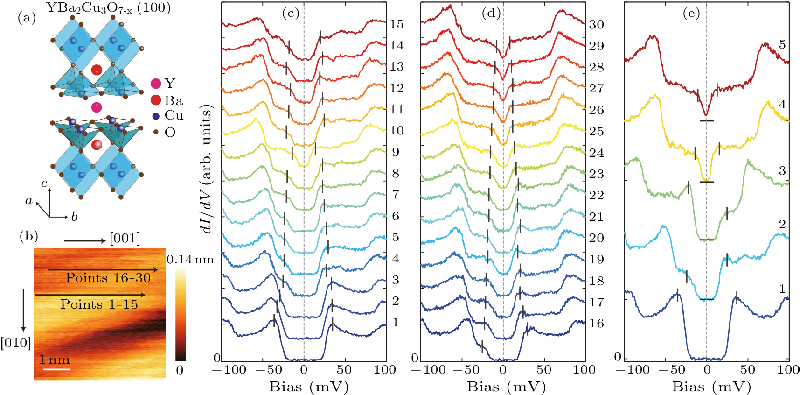| CONDENSED MATTER: ELECTRONIC STRUCTURE, ELECTRICAL, MAGNETIC, AND OPTICAL PROPERTIES |
 |
|

|
|
|
Possible Nodeless Superconducting Gaps in Bi$_2$Sr$_2$CaCu$_2$O$_{8+\delta}$ and YBa$_2$Cu$_3$O$_{7-x}$ Revealed by Cross-Sectional Scanning Tunneling Spectroscopy |
| Ming-Qiang Ren1,2, Ya-Jun Yan1,2, Tong Zhang1,2**, Dong-Lai Feng1,2** |
1State Key Laboratory of Surface Physics, Department of Physics, and Advanced Materials Laboratory, Fudan University, Shanghai 200433
2Collaborative Innovation Center of Advanced Microstructures, Nanjing 210093 |
|
| Cite this article: |
|
Ming-Qiang Ren, Ya-Jun Yan, Tong Zhang et al 2016 Chin. Phys. Lett. 33 127402 |
|
|
|
|
Abstract Pairing in the cuprate high-temperature superconductors and its origin remain among the most enduring mysteries in condensed matter physics. With cross-sectional scanning tunneling microscopy/spectroscopy, we clearly reveal the spatial-dependence or inhomogeneity of the superconducting gap structure of Bi$_2$Sr$_2$CaCu$_2$O$_{8+\delta}$ (Bi2212) and YBa$_2$Cu$_3$O$_{7-x}$ (YBCO) along their $c$-axes on a scale shorter than the interlayer spacing. By tunneling into the (100) plane of a Bi2212 single crystal and a YBCO film, we observe both U-shaped tunneling spectra with extended flat zero-conductance bottoms, and V-shaped gap structures, in different regions of each sample. On the YBCO film, tunneling into a (110) surface only reveals a U-shaped gap without any zero-bias peak. Our analysis suggests that the U-shaped gap is likely a nodeless superconducting gap. The V-shaped gap has a very small amplitude, and is likely proximity-induced by regions having the larger U-shaped gap.
|
|
Received: 08 November 2016
Published: 29 December 2016

|
|
| PACS: |
74.20.Rp
|
(Pairing symmetries (other than s-wave))
|
| |
74.25.Jb
|
(Electronic structure (photoemission, etc.))
|
| |
74.55.+v
|
(Tunneling phenomena: single particle tunneling and STM)
|
| |
74.72.-h
|
(Cuprate superconductors)
|
|
|
| Fund: Supported by the National Natural Science Foundation of China, and the National Key Research and Development Program of China under Grant No 2016YFA0300203. |
|
|
|
|
Viewed |
|
|
|
Full text
|
|
|
|
|
Abstract
|
|
|
|
|